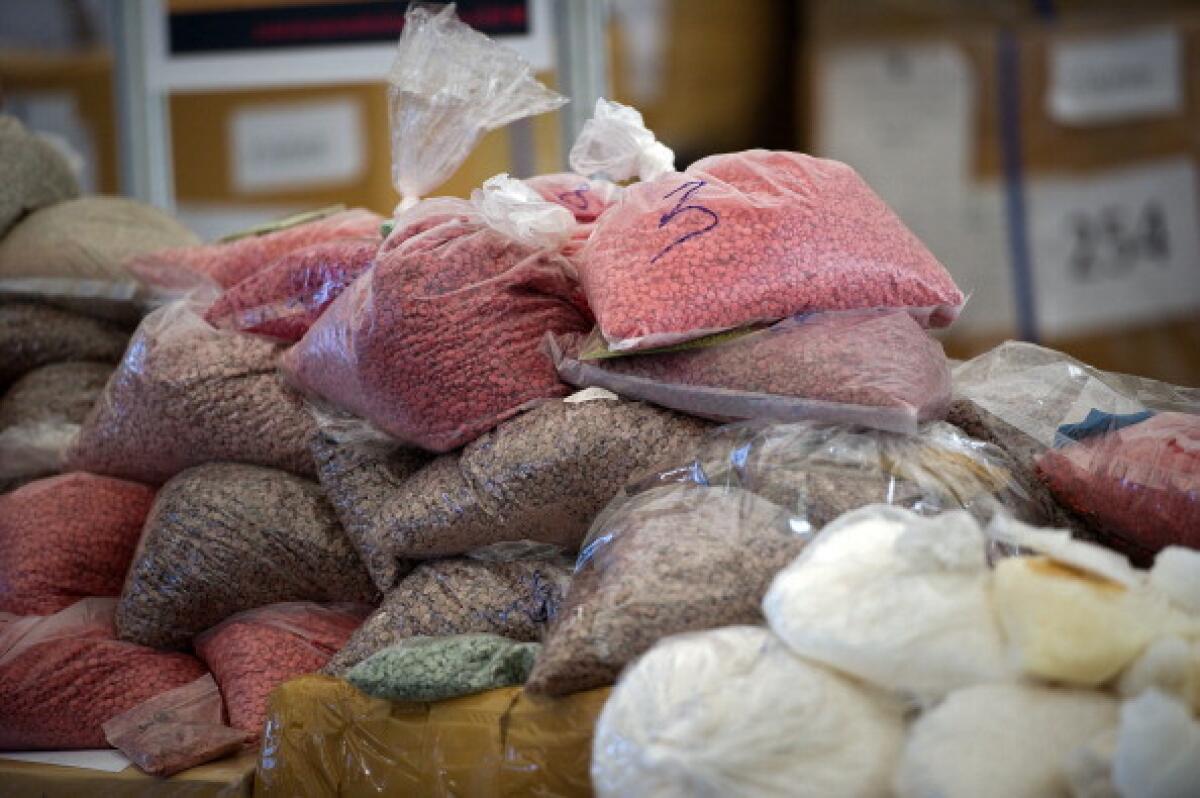Sex, drugs and ... more sex and drugs

Forget about rock ‘n’ roll: When rats are administered the highly addictive stimulant methamphetamine and allowed to engage in sexual behavior while high, all they want is more of both. That’s the raw finding of a study published Tuesday by the Journal of Neuroscience.
It’s important because many who use methamphetamine report that it enhances their sexual experience. But because it also reduces their inhibitions, those abusers are more likely to engage in risky sexual behavior, including unprotected sex and anal intercourse. The result: HIV transmission appears to be far more likely among methamphetamine users than it is among those who do not take the drug.
A recent report found methamphetamine use to remain far higher in the Western states than elsewhere in the United States.
The article in the Journal of Neuroscience sheds light on the circumstances under which drug-seeking and sex-seeking behavior become fused. Specifically, it finds that when rats are introduced to methamphetamine and sexual behavior concurrently, they go on -- weeks later -- to seek sex even when doing so results in the rat equivalent of nausea. And they return again and again to the place where they got their first taste of the drug in a bid to get some more.
Off of methamphetamine, the addicted male rats were actually pretty unmotivated by the prospect of sex with a receptive female. When there was no shot of methamphetamine involved, they were a lot less keen to mate than were rats that got the placebo shots of saline instead.
But once amped on meth, the rats that had been conditioned to link the two wanted both, and their behavior suggested compulsion in going after each.
High doses of meth were not necessary to induce the compulsive drug-seeking and sex-seeking behavior. When researchers injected rats with a relatively low dose and allowed them to mate with receptive females, their subsequent behavior suggested a more potent drive toward sex and drugs than among rats who steadily got a higher dose.
Since methamphetamine gained widespread use in the 1990s, researchers have puzzled over what it was about the drug that made users so vulnerable to sexually transmitted diseases. Maybe, some speculated, it was that those with a propensity to risk-taking -- including risky sexual behavior -- were more likely to try meth.
The authors of the current study -- from the University of Ontario and the University of Michigan at Ann Arbor -- cite earlier research as well as this study to suggest that methamphetamine paves the way for risk-taking behavior by revving up brain regions involved in reward-seeking and suppressing activity in brain regions that would normally apply the brakes in the face of risky behavior.



